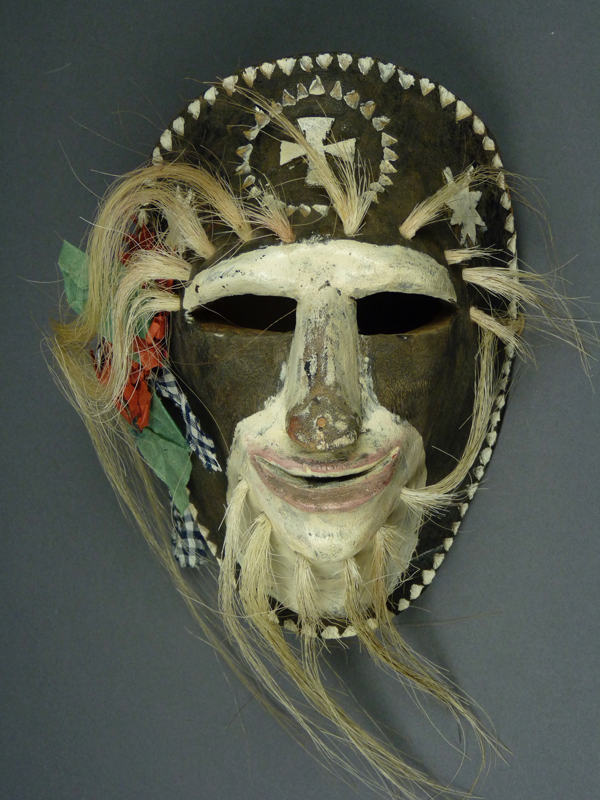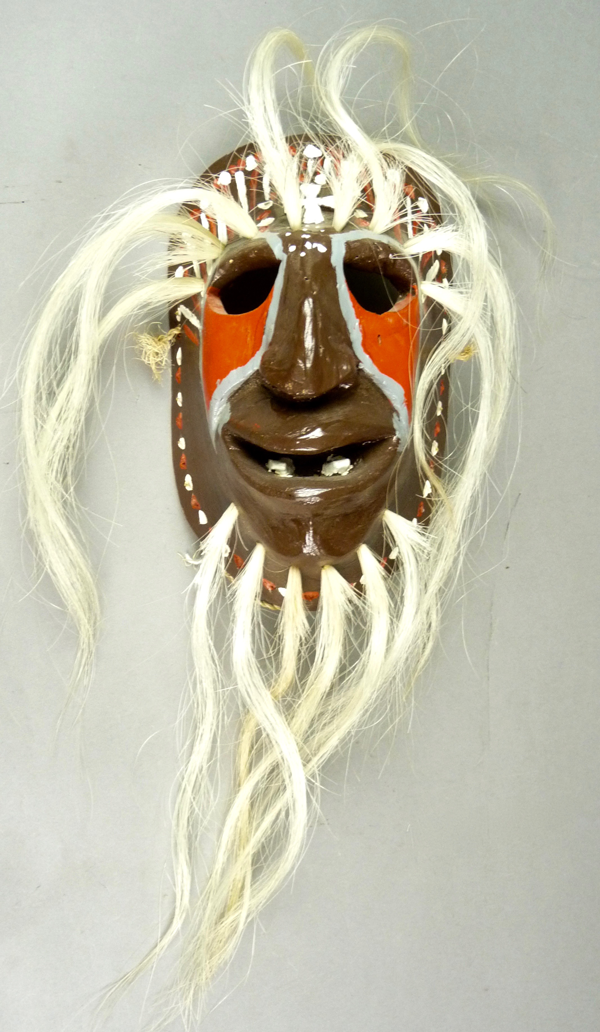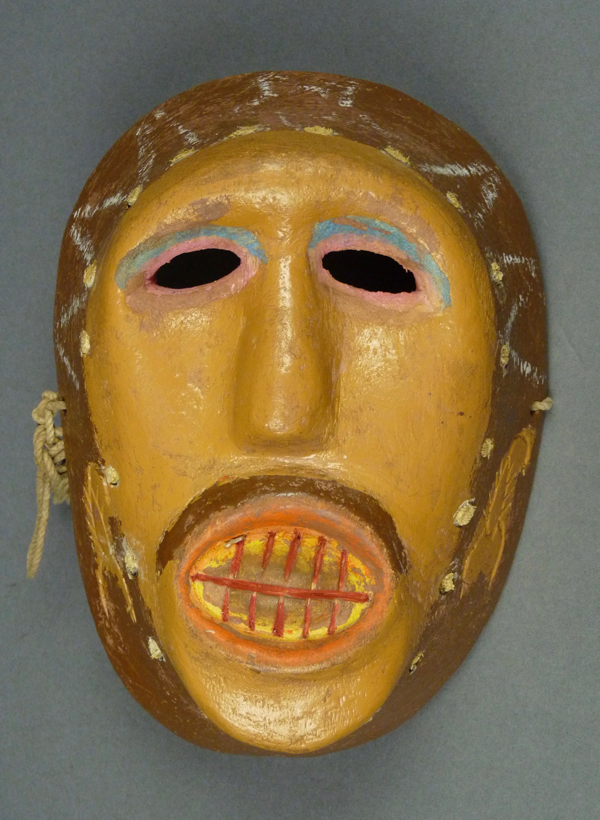The Mayo Indians live in two adjacent Mexican states, Sonora and Sinaloa. Those in Sonora live in towns along the Rio Mayo, while those in Sinaloa live along the Rio Fuerte. There is apparently just enough distance between these two areas to have allowed differences to develop between their traditions. However we know so little about these differences. One obvious detail is that historically the Mayo Pascolas in Sonora have only rarely used animal faced Pascola masks, while those in Sinaloa have embraced Goat faced masks since the middle of the 20th century and perhaps for much longer. Therefore, as we turn our attention to Mayo Pascola masks from the Rio Fuerte towns we will see a mixture of Human faced and Goat faced masks. We will also see again a profusion of made for sale masks that don’t adhere to such traditions.
Much of what we do know about Sinaloa Mayo mask traditions has resulted from the activities of traders such as Barney Burns and Mahina Drees. I introduced them in my post of August 22, 2016. Here is a link to that post.
https://mexicandancemasks.com/?p=6930#more-6930
As you may recall, Barney and Mahina encouraged Indians in a number of Northern Mexican states to produce their traditional arts and crafts for a North American audience, thus providing these subsistence farmers access to cash and modern materials that requires cash to acquire. Then they sold these crafts to Indian Arts dealers in the United States. Along the way, they also collected objects that they found particularly interesting, such as danced masks. One of the Sinaloa carvers, Saturnino Valenzuela, stands out as a prolific and talented artist, so I will begin with his masks. Today we will examine four of those that I purchased from Tom Kolaz in 1998. Three of the four had been danced. These masks served as my introduction to this carver.
The first of these has a very long beard.

Otherwise this example is very representative of Saturnino’s style. Almost all of his masks have:
1. this rim design of small gouged triangles painted in alternating colors,
2. a forehead cross that has been carved in relief, and
3. additional decorative elements that are carved in relief, such as flowers, stems of flowers, and even flower pots. This mask has flowers with stems on the cheeks.
Continue Reading →




